Originally intended to be a single film, Quentin Tarantino’s sprawling revenge epic Kill Bill was split into two parts by Miramax for ease of theatrical distribution. But if the bifurcation was imposed on the director, the split nonetheless draws attention to the stark difference in style and tone between each part. With the benefit of hindsight, however, it’s easy to see the division between the films as the line of demarcation separating Tarantino’s early career from his more measured, even mature second phase.
Kill Bill: Vol. 1, released in 2003, represents the aesthetic and tonal pinnacle of Tarantino’s juvenile cinephile side. The Bride (Uma Thurman), a former member of the Deadly Viper Assassination Squad, is ambushed on her wedding day by the members of her former gang and its ringleader—and the Bride’s ex-lover—Bill (David Carradine), who promptly slaughter the guests and groom and leave the pregnant heroine comatose. Upon regaining consciousness months later, the Bride swears revenge on Bill and the other members of the squad.
Tarantino keeps the setup simple in order to leave the most space possible to serve up a smorgasbord of references to the genre cinema that obsessed him during his years as a video store clerk: spaghetti westerns, kung-fu movies, and yakuza thrillers. He even includes his own earlier work among the touchstones. The first segment, which sees the Bride going after the now-retired Vernita Green (Vivica A. Fox), could pass for something out of Pulp Fiction. They duel in an overlit and softly colored home that Vernita has carefully crafted to present a facade of suburban normalcy, and is reduced to a war zone of broken glass and splintered furniture.
The film, though, doesn’t really kick into overdrive until its second half, which sees the Bride pitted against yakuza leader O-Ren Ishii (Lucy Liu). Throughout this stretch, Tarantino salutes as much of high- and low-art Japanese cinema as he can, starting with an anime interlude illustrating O-Ren’s origin story and culminating in the bravura House of Blue Leaves sequence that crams several different kinds of fight choreography into the Grand Guignol-style showdown between the Bride, O-Ren, and 88 of O-Ren’s sword-armed underlings.
As limbs and gouts of blood start flying, there are nods to Fukasaku Kinji’s Battle Royale, the Lady Snowblood series, Suzuki Seijun’s surreal 1960s features, as well as music cues yanked from Sakamoto Junji’s New Battles Without Honor or Humanity and Iwai Shunji’s All About Lily Chou-Chou. This sequence even boasts a cameo by Japanese rockabilly revivalists the 5.6.7.8’s, whom Tarantino discovered over a Tokyo urban clothing store’s PA system.
All the while, Tarantino modulates the quotable dialogue for which he’s become famous by breaking up its usual rapid-fire rhythms, introducing disjointed cadences and awkward mouthfuls that mimic the old English dubs of Asian movies. The entire sequence, whose extraordinary fight choreography is captures with balletic camera movements and Sally Menke’s note-precise editing, marks the peak of Tarantino’s synthesist powers.
When Vol. 2 arrived in 2004, it came as a shock to see Tarantino follow up that sequence with a pronounced downshift in tempo. Opening with a full view of the fateful day that Bill caught up with the Bride at her wedding, the film plunges into a melancholy that, outside of a few moments from Jackie Brown, is absent from the director’s work to that point. Compared to the hard-edged, two-dimensionally badass antagonists that the Bride faced in the first volume, her remaining nemeses are mostly haunted by the guilt of their actions. As Bill’s shiftless, alcoholic brother, Budd (Michael Madsen), admits, “That woman deserves her revenge, and we deserve to die.” It’s a sentiment that, later, Bill nearly voices himself.
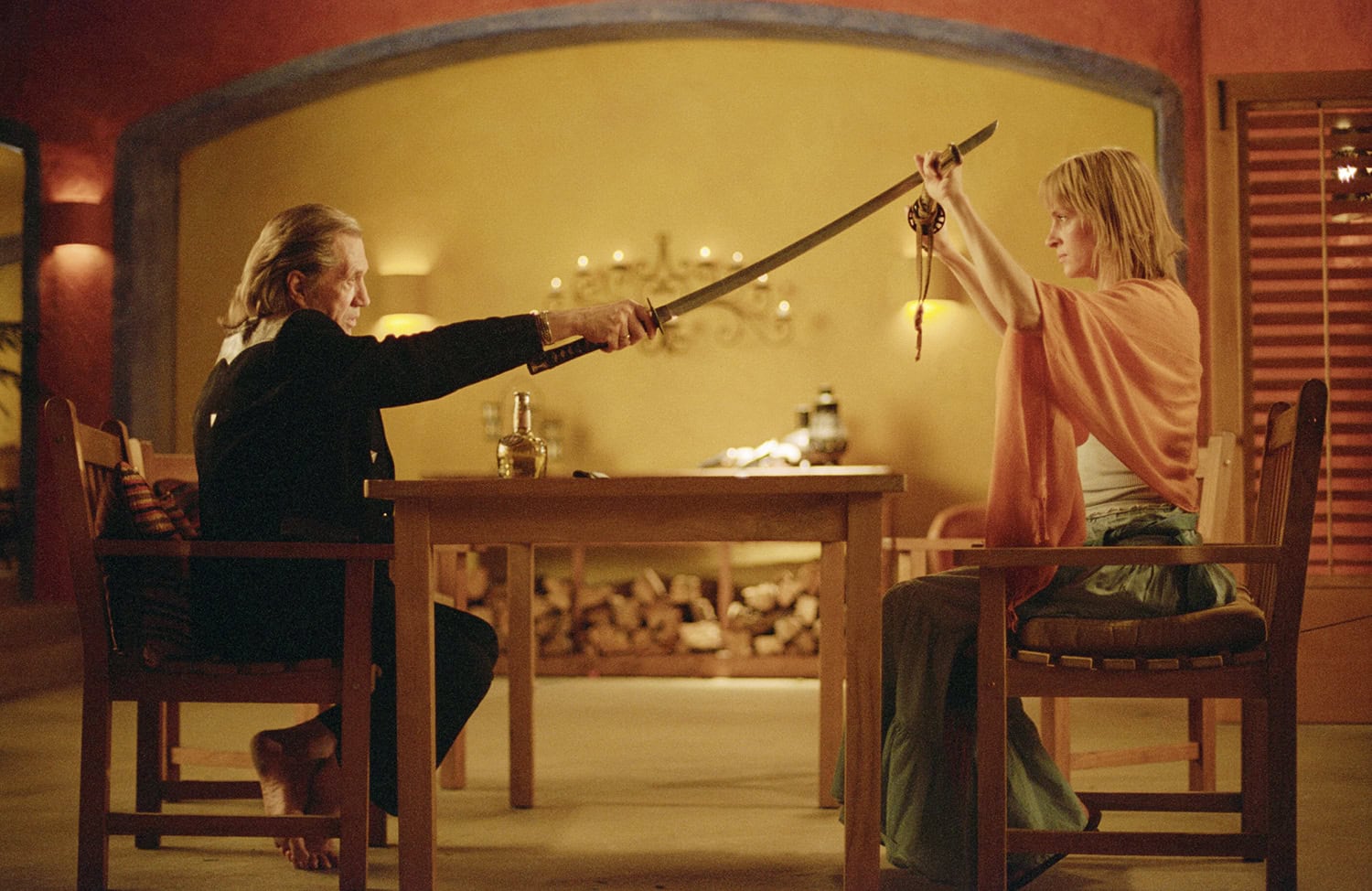
There are still numerous references to Tarantino’s inspirations throughout the film. The overall touchstone shifts from Japanese ultraviolence to the dusty existentialism of spaghetti westerns, albeit of a sort closer to the operatic morality plays of Sergio Leone than to the dirtier, rawer work of Sergio Corbucci, of whom Tarantino is particularly fond. An extended flashback to the Bride training under kung-fu master Pai-Mei (Shaw Brothers legend Gordon Liu) replicates the naturalistic lighting and earthen color palettes of classic Shaw wuxia films.
Nonetheless, Vol. 2 is propelled more by Tarantino’s own visual and authorial stamps than its homages. Dialogue in particular regains the mellifluous lilt that was suspended in Vol. 1’s aforementioned dub-like cadences, but characters generally speak slower than they did in earlier Tarantino features, letting slip the feelings buried under their hip chatter.
Tarantino also offers a compelling foil for the Bride in the form of Elle Driver (Daryl Hannah), another member of the Deadly Viper Assassination Squad and a near-double for our heroine. She represents the path that the Bride didn’t take, from challenging Pai-Mei to sticking romantically with Bill; her venomous demeanor is basically Bride’s savagery minus her mitigating humanity. Elle’s presence adds additional layers to the Bride by virtue of the contrast she provides, and her blackly comic comeuppance is Tarantino’s sick humor at its best.
Above all, the defining quality of Vol. 2 that would shape much of Tarantino’s subsequent work is the regret that the characters betray amid all the ostensibly glib ultraviolence. When, in a beautifully ambiguous scene near the end, the Bride finally confronts Bill, she finds a man diminished by self-loathing, a once-cold man who wearily admits that being willing to kill the Bride for love ricocheted back onto himself. And in a quiet moment during the coda where the Bride processes everything she’s done, she mourns as much as she celebrates a new lease on life.
With Vol. 2, Tarantino for the first time fully abandons his glibness toward death and considers the aftershocks of revenge, something he would explore to even richer effect in films like Inglourious Basterds and Once Upon a Time…in Hollywood. After a decade as Hollywood’s most talented video clerk, he fully blossoms into a great artist.
Kill Bill: Vol. 1 and Kill Bill: Vol. 2 are now available on Lionsgate 4K UHD Blu-ray.
Since 2001, we've brought you uncompromising, candid takes on the world of film, music, television, video games, theater, and more. Independently owned and operated publications like Slant have been hit hard in recent years, but we’re committed to keeping our content free and accessible—meaning no paywalls or fees.
If you like what we do, please consider subscribing to our Patreon or making a donation.

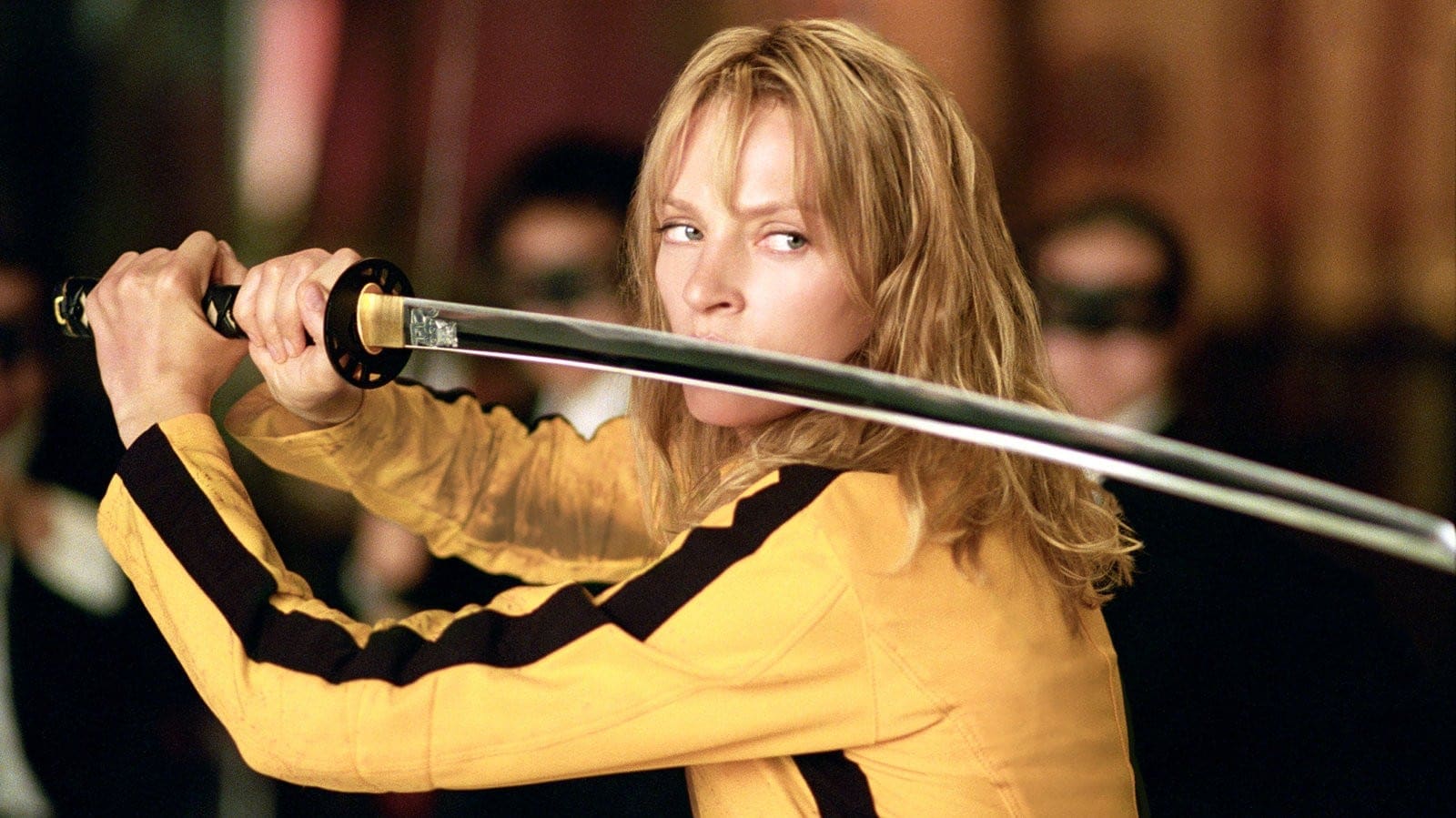
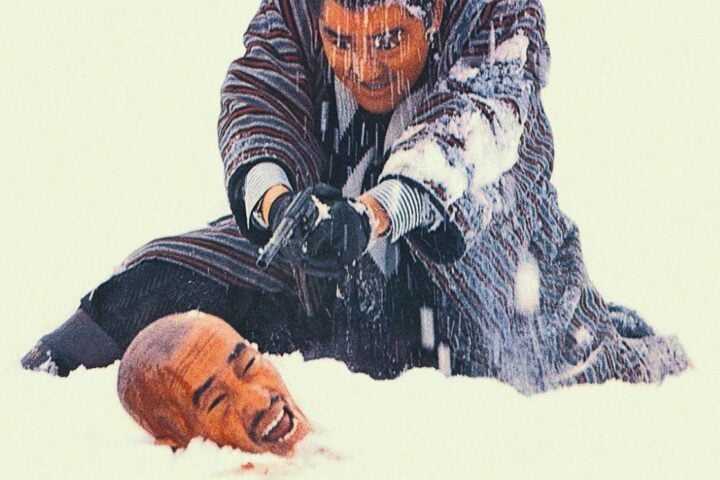
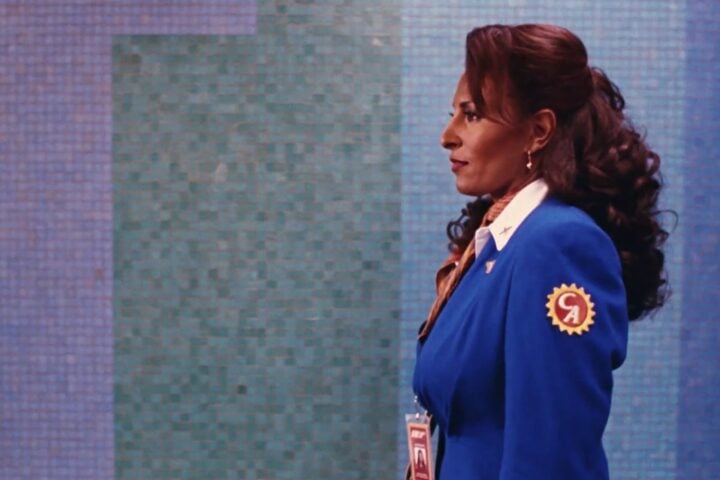
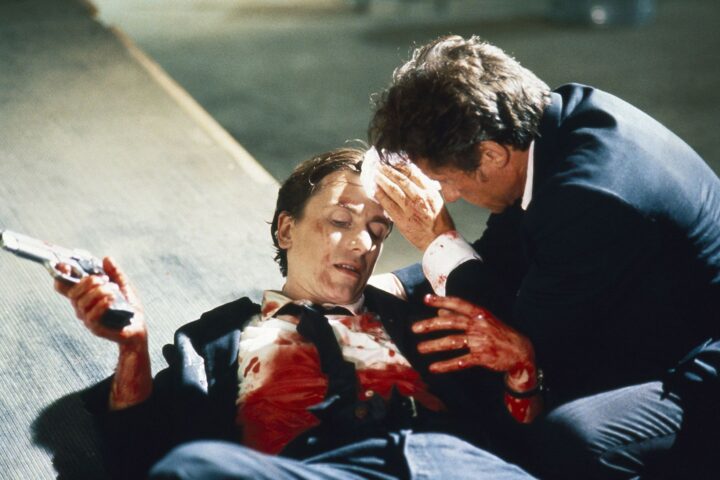
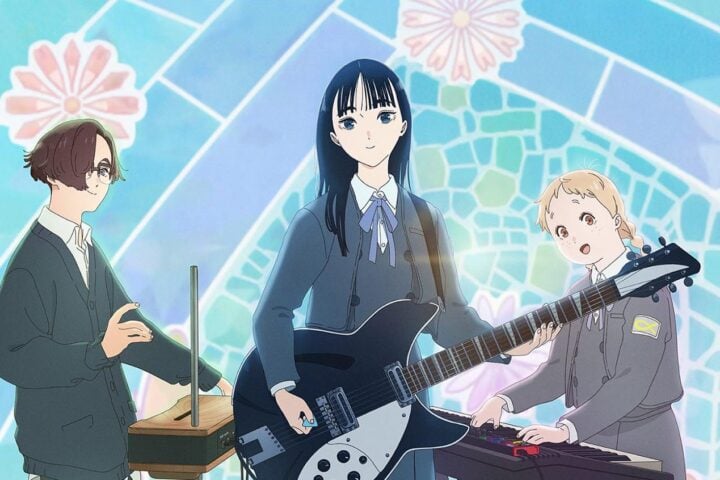
surely you are trolling to suggest tarantino got better after kill bill rather than much worse
Hello, Quentin Tarantino’s Kill Bill: Vols. 1 and 2 is a masterful blend of stylized action, revenge, and homage to martial arts cinema. Uma Thurman delivers a captivating performance as The Bride, anchoring the film’s intense emotional and physical journey.
Keep going on these types of wonderful Blogging, Thank You.